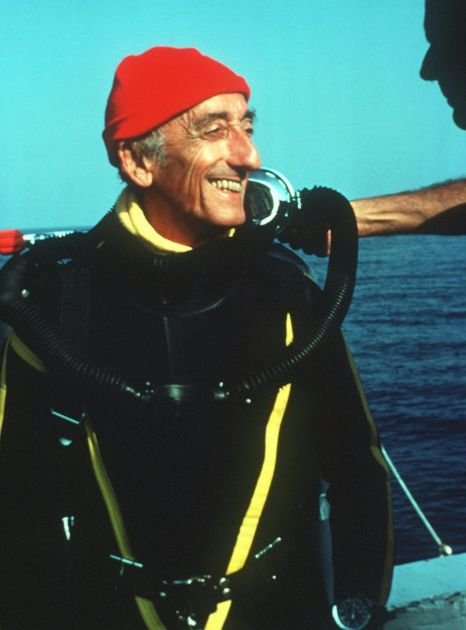3 Keys to Becoming a Transformational Leader
Mau Pialug, master Polynesian navigator who helped revive non-instrumental wayfinding.
Jacques Cousteau
Leadership is so much more than managing others on your way to a goal.
The expedition leaders I’ve come to respect in real life and in the history books always seem to bring something extra to the endeavor. The result is a more satisfying experience that transcends “voyage” and enters the realm of personal and group transformation.
So what is “it” and how do we emulate it in our own journeys?
According to Bernard Bass and his paper, Leadership and Performance Beyond Expectations, exceptional leaders motivate and transform followers in three key ways:
(1) heightening their awareness of the importance and value of designated goals,
(2) encouraging them to transcend self-interests for the good of the organization or team, and
(3) activating their higher order needs, articulating an inspiring vision and acting as role models in attaining the vision.
In exploration speak:
Jacques Cousteau didn’t simply rally teams around diving and boat trips; he made people fall in love with the sea, with what discoveries could be made, and what could be learned. Then, after seeing the destruction caused by overfishing and oil drilling (some of which came from BP, who financed Cousteau’s early work), he heightened everyone’s awareness of the issue, and shared the value in protecting the oceans.
While as many as 6 Micronesian navigators (still, not many) could sail by traditional Carolinian (non-instrument) navigating methods in the 1970s, only Pius “Mau” Pialug was willing to share his knowledge in the hope that the navigating method would be preserved for future generations. As seen here, in this piece by the incredible Hōkūleʻa sailer and navigator Chad Baybayan (who sadly passed away in 2021), Mau brought transformational leadership traits to his teachings:
“I have laid the stick that connects people together. Now it is up to you, your generation and the generations to come, to build upon that stick a bridge that will ensure the free sharing of information and teaching between the two peoples until the day we become united again as a single people, as we were once before; before men separated us with their imaginary political boundaries of today's Polynesia and Micronesia.” - Mau Pailug
Dr. Mae Jemison carried Bessie Coleman’s picture with her on her first mission in the Space Shuttle Endeavor in 1992, when she became the first African American woman in space. She’s now a transformational leader in her own right.
3. In the 1920s, Bessie Coleman became the first African American and Native American woman to earn her pilot’s license. Because the only school to admit her was located in northern France, she first had to learn french before attending. When she did finally fly, she realized that “The air is the only place free from prejudice.”
License in hand, she eventually opened a flight school for black women, not because it offered a career (it didn’t), but because:
“I decided blacks should not have to experience the difficulties I had faces, so I decided to open a flying school and teach other black women to fly.”
Can you feel the energy in these examples?
Can you see why so many were drawn to them during their lives and even after they passed away?
Take time to note the ways you might heighten your followers’ awareness of your designated goals?
Can you walk the walk, lead by example, and inspire them to transcend self interests for the good of the group or organization?
Can you start to see ways you might approach your role as a leader differently in order to bring about a more transformational following?
Remember though:
Inspiration must be equaled by organization.
Inspiration is powerful but nebulous. It needs guardrails in order to channel energy towards the shared goal. Transformational leaders harness inspiration by clearly articulating high performance demands. They understand that without an organized, step by step plan to set in motion, any gains in follower motivation will quickly give way to frustration and confusion.
From The Worst Journey in the World by Apsley Cherry-Garrard, on the south pole expedition with Robert Scott:
“…we wasted our man-power in one way which could have been avoided…volunteering was relied on not only for emergencies, but for a good deal of everyday work that should have been organised as routine; Men were allowed to do too much, and were told afterwards that they had done too much; and that is not discipline…Until our last year we never insisted on a regular routine.”
Take the time to think on these principles and examples. How might you integrate them into your life? (And let Cherry-Garrard be the only one to write about the worst journey in the world). If you need help in honing your skills, check out these links for a deeper dive.
DEEPER DIVE
Organizational Leadership Specialization (Coursera: Northwestern University)
How to Become a Transformational Leader (London School of Economics and Political Science)
Becoming a Transformational Leader (Wisconsin School of Business)
https://business.wisc.edu/news/becoming-a-transformational-leader/
The Path Is the Goal: How Transformational Leaders Enhance Followers’ Job Attitudes and Proactive Behavior (National Library of Medicine: Frontiers in Psychology)


